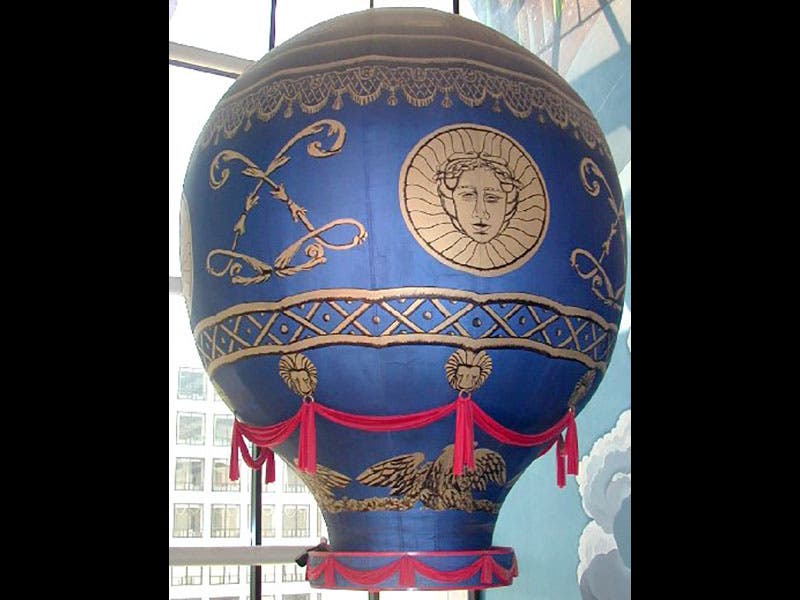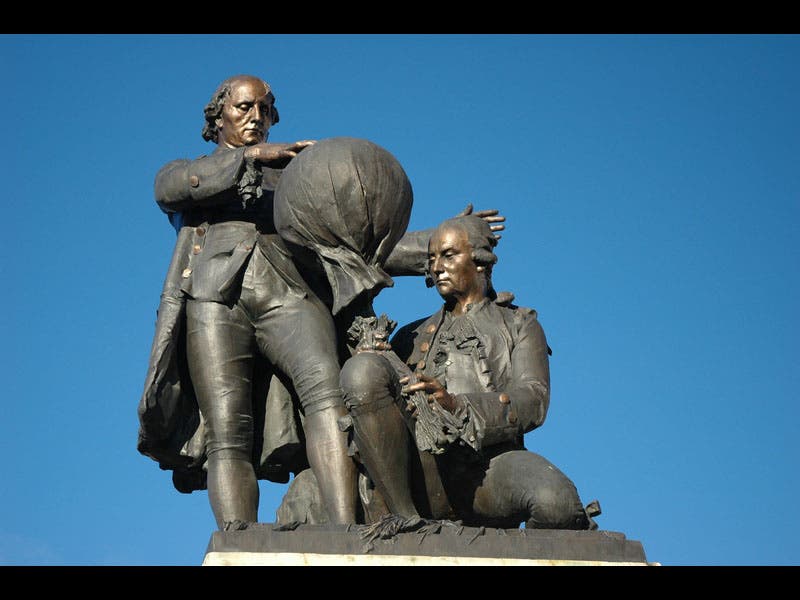Scientist of the Day - Joseph and Étienne Montgolfier
On Sep. 19, 1783, a large hot-air balloon slowly lifted from the grounds of Versailles Palace outside Paris, leaving behind a vast and cheering crowd. The passengers were a rooster, a sheep, and a duck, the first living creatures ever to ascend from the earth in a man-made machine. The balloon was garishly decorated, as though it were made of wallpaper removed from some French salon, which is not too surprising, since the balloon was built by two paper manufacturers, Étienne and Joseph Montgolfier, in collaboration with Jean-Baptiste Reveillon, a wallpaper baron. A Montgolfier balloon had first gone airborne three months earlier, with no one on board, and the next venture, in November, would carry two humans, but this launch of Sep. 19 was given over to the animal kingdom. An engraving commemorating the faunal affair (first image) serves as the frontispiece to the first volume of Barthélemy Faujas de Saint-Fond, Description des expériences de la machine aérostatique de MM. de Montgolfier (1783), a book in our History of Science collection. It does not, unfortunately, provide any view of the passengers. Other images above depict the first manned flight of Nov. 21, 1783 (second image) and a model of a Montgolfier in the National Air and Space Museum (NASM; third image).
The sheep was supposedly chosen for the crew because its physiology was thought to be similar to that of a human; the duck because it could fly; and the rooster--no one seems to know why the rooster was selected. The balloon ascended to about 1500 feet, flew for 2 miles, and settled back to earth. It was reported that the rooster broke a wing on landing, which gave rise to some fears for the health of the future human occupants; then it was further reported that it was not the hard landing, but the hard-kicking sheep who had done in the rooster, and fears were allayed, since humans would not be travelling with a sheep. During World War II, the Army Air Corps had an Airship Group of balloonists, and their insignia displayed a sheep, a duck, and a rooster, in honor of their illustrious predecessors. At least one patch survives at the National Air and Space Museum (fourth image).
The Montgolfier brothers are commemorated by a statue in their home town of Annonay, in the Ardèche region of France (fifth image).
Dr. William B. Ashworth, Jr., Consultant for the History of Science, Linda Hall Library and Associate Professor, Department of History, University of Missouri-Kansas City. Comments or corrections are welcome; please direct to ashworthw@umkc.edu.











